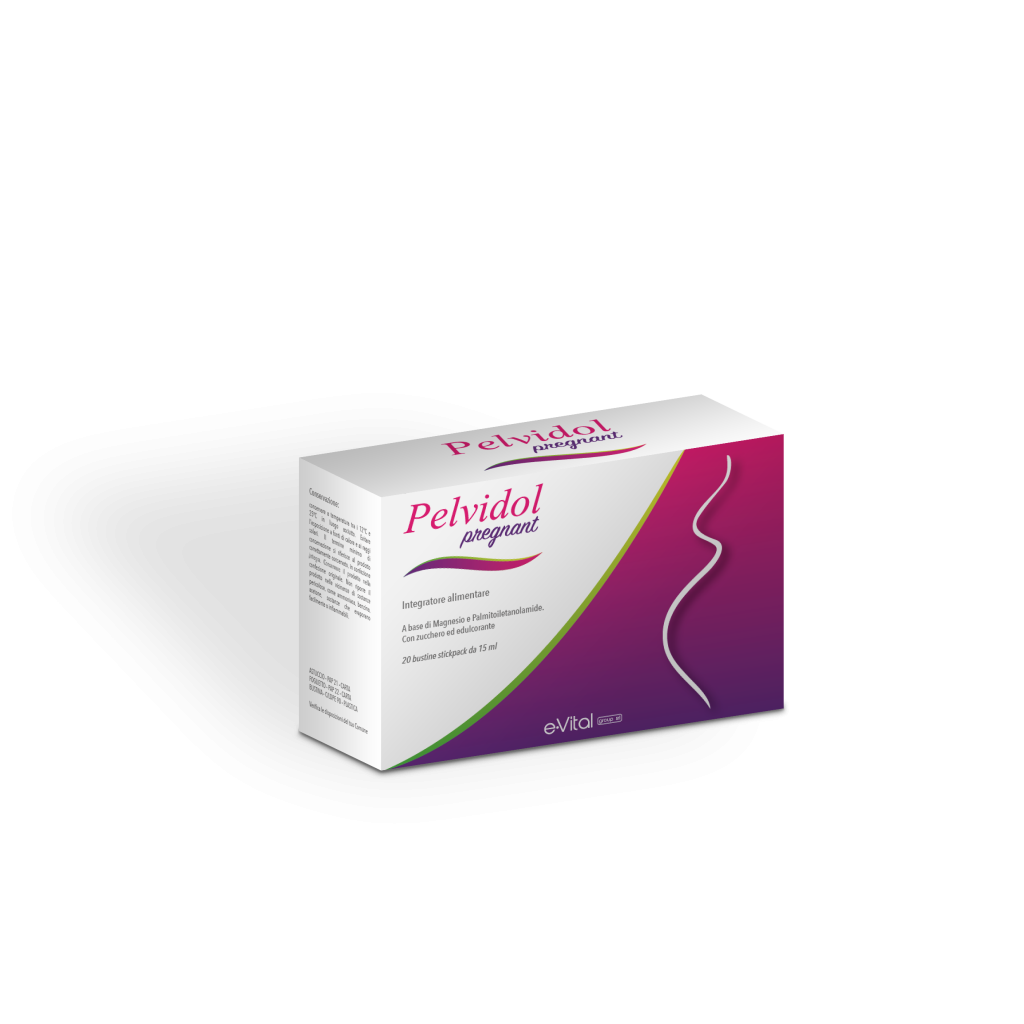Pelvidol pregnant
OF UTERINE HYPERCONTRACTILITY IN PREGNANCY
- How to use
Pelvidol pregnant is useful in all cases of uterine hypercontractility in pregnancy, threat of abortion, threat of premature birth and after invasive prenatal procedures. It can be taken either alone or in combination with muscle relaxant, pain relieving and anti-inflammatory therapies. It is recommended taking 1 sachet per day for a minimum treatment duration of 4 weeks.

- Risk factors
Main causes of uterine hypercontractility in pregnancy:
- Threat of abortion
- Threat of premature birth
- Polyhydramnios
- Gemellar pregnancy
- Invasive prenatal procedures
- Active ingredients
PEA 300 mg
Magnesium 241,2 mg
- Why Pelvidol pregnant?
Pelvidol pregnant is a food supplement based on Palmitoylethanolamide (PEA) and Magnesium designed to counteract the state of uterine hypercontractility in pregnancy, with specific indication in pathological conditions of threat of abortion and premature birth.
Pelvidol Pregnant contains a high dosage of Magnesium, the supplementation of which helps to counteract neuropsychic disorders (anxiety, anguish, irritability, drop in mood, emotionality, insomnia), neurovegetative somatizations (tachycardia, dyspnoea, extrasystoles, vasoconstriction/ hypertension, pallor, flushing, gastrointestinal symptoms) and neuromuscular manifestations (cramps, paraesthesia, myalgias, physical fatigue, muscular asthenia) and 300 mg of PEA, is a biological modulator that acts as a natural analgesic and anti-inflammatory, very well tolerated and without side effects, in able to decrease the perception of pain and reduce cellular stress. Pelvidol pregnant is indicated for the maintenance of uterine quiescence throughout pregnancy, especially in cases of increased risk of pathological uterine contractile activity, such as multiple pregnancies, conditions of uterine overdistension from polyhydramnios and after invasive prenatal diagnostic procedures. (villocentesis, amniocentesis, cordocentesis).

- Bibliography
- Engeler D, A.P. Baranowski, J. Borovicka, A. Cottrell, P. Dinis-Oliveira, S. Elneil, J. Hughes, E.J. Messelink, A. van Ophoven, Y. Reisman, A.C. de C. Williams Guidelines on Chronic Pelvic Pain. European Association of Urology, 2014
- Royal College of Obstetricians and Gynaecologists. Therapies Targeting the Nervous System for Chronic Pelvic Pain Relief. Scientifc Impact Paper No. 46. January 2015
- Gomes MB, Negrato CA.. Alpha-lipoic acid as a pleiotropic compound with potential therapeutic use in diabetes and other chronic diseases. Diabetol Metab Syndr. 2014 Jul 28;6(1):80
- Di Tucci C, Di Feliciantonio M, Vena F, Capone C, Schiavi MC, Pietrangeli D, Muzii L, Benedetti Panici P. Alpha lipoic acid in obstetrics and gynecology. Gynecol Endocrinol. 2018 Sep; 34(9):729-733. doi: 10.1080/09513590.2018.1462320. Epub 2018 May
- Gröber U, Schmidt J, Kisters K. Magnesium in Prevention and Therapy. Nutrients. 2015 Sep; 7(9): 8199–8226.
- Goldenberg R.L. Culhane J.F. Iams J.D. Romero R. Epidemiology and causes of preterm birth. Lancet. 2008; 371: 75-84
- Maccarrone M. Valensise H. Bari M. Lazzarin N. Romanini C. Finazzi-Agro A.
- Relation between decreased anandamide hydrolase concentrations in human lymphocytes and miscarriage.Lancet. 2000; 355: 1326-1329
- Deshmukh NS, Gumaste S, Subah S, Bogoda NO.Palmitoylethanolamide: Prenatal Developmental Toxicity Study in Rats.Int J Toxicol. 2021 Mar-Apr;40(2):161-170. doi: 10.1177/1091581820986073. Epub 2021 Feb 12.PMID: 33576293
